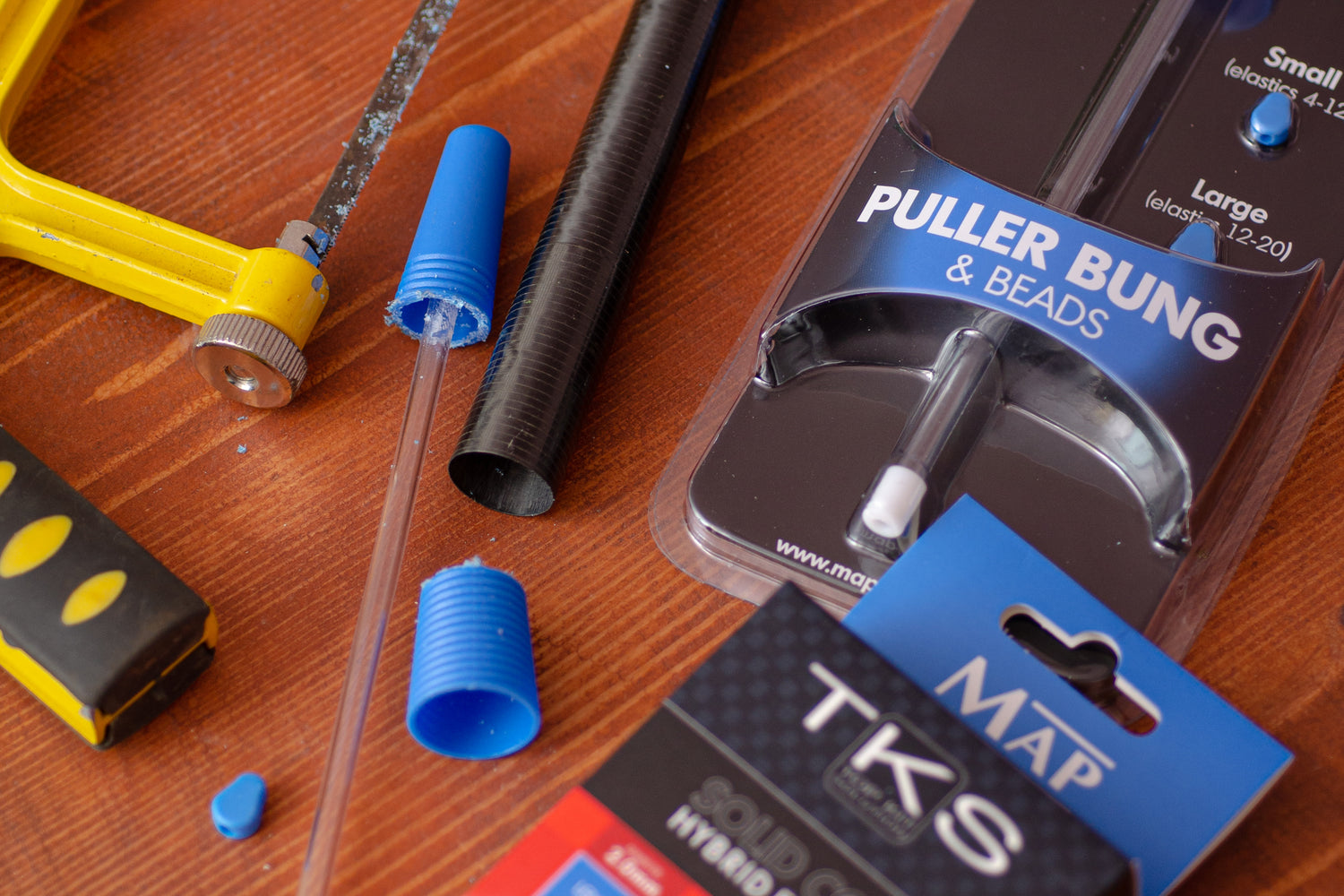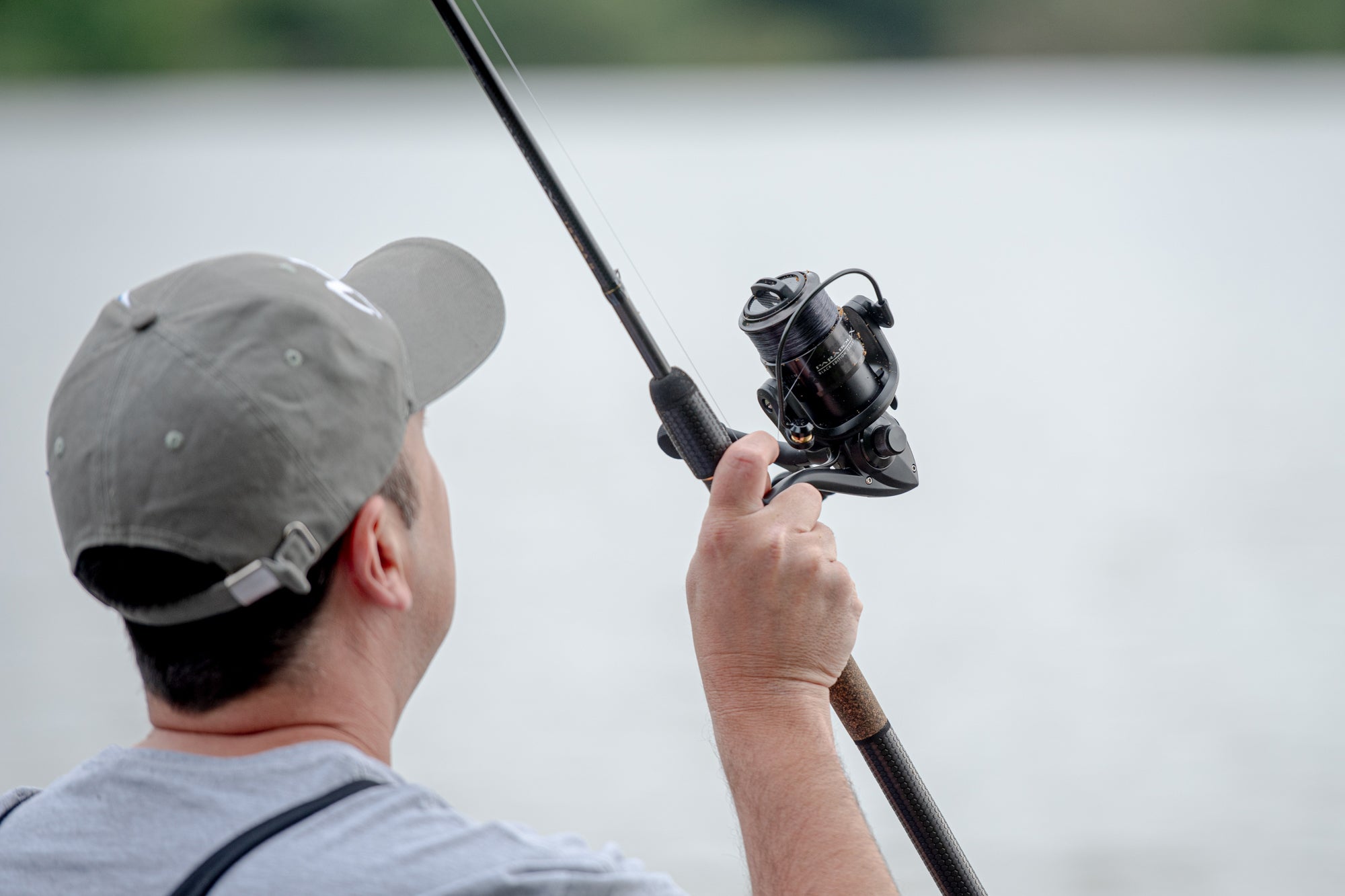Ensuring that your pole is elasticated correctly is an important part of having an effective set up to make the most of your pole fishing.
If your elastic isn’t fitted correctly, you can have a number of problems which can result in lost fish, a lack of control and tangles! We’ve put together a short step by step guide to getting your top kits correctly elasticated, every time!
Elastic Choice
There are two types of elastic that you need to consider the first are hollow elastics, these have been popular for a number of years and feature a hollow core, these offer great durability and huge stretch properties which make them a great choice for commercial venues.
Our TKS Twin Core Hollow elastics are available in sizes from a super soft 3-6 which is ideal for silver fish right the way up to an 18-20 that is capable of taming the biggest commercial carp. 
The other option you have is a Hybrid Elastic, these have become incredibly popular in recent years, combining the durability of a solid elastic but with more stretch than a hollow.
Our TKS Solid Core Hybrid elastic range also offers amazing value for money, coming in 6m lengths meaning a single pack can elasticate two full length top kits or three shallow kits. Once again TKS Solid Core Hybrid is available in 8 different sizes from a 4-6 for silver fish work all the way though to margin carp fishing with an 18-20 beast!
Once again TKS Solid Core Hybrid is available in 8 different sizes from a 4-6 for silver fish work all the way though to margin carp fishing with an 18-20 beast!
Fitting Your Elastic
Once you’ve decided on the size of elastic you want to use the first step is to make sure that your top kit is dry inside, this makes threading the elastic through the section so much easier – if time doesn’t allow for this, then you will need a diamond eye threader to pull the elastic through the top kit. Thread the elastic through the Side Puller.
Thread the elastic through the Side Puller.
Start at the puller kit and simply thread the elastic through the hole, and feed it through shaking the section to help the elastic through, once it’s through the narrow end of the section it’s time to attach a Side Puller Bead to the elastic at the puller kit end of the elastic.  Side Puller Beads are available in two sizes.
Side Puller Beads are available in two sizes.
With lighter elastics, the small bead will be best but for those commercial carp elastics the larger bead will be easier to work with. To put the bead onto the elastic, there are two different methods you can use.
For Hollow Elastics you can use a fine gate latch needle, place the bead onto the needle with the thicker end at the handle and the thin end facing the elastic, simply hook the needle into the hollow at the end of the elastic and close the latch and slide the bead on.  A gate latch needle makes life easy!
A gate latch needle makes life easy! A loop knot cut off and pulled into the bottom of the bead gives a safe and secure fit.
A loop knot cut off and pulled into the bottom of the bead gives a safe and secure fit.
When using Hybrid elastics, you don’t have the hollow so a diamond eye threader is the easiest way of getting the bead on to the elastic, simply put the diamond eye through the thicker end of the bead, put the elastic through the eye and pull back through the thin end of the bead, then tie a loop knot and trim off.
The Diamond Eye threader method can be used with both Hollow and Hybrid elastics.
With the bead fitted onto the elastic, it’s time to thread the elastic through the second section, thread the elastic into the base of the section and give the section a tap to get the elastic through the end of the tip section.  With the elastic through both sections, give it a good stretch!
With the elastic through both sections, give it a good stretch!
When the elastic is threaded through both sections, put the top kit together and pull the elastic from the tip to stretch the elastic, this stops any annoying ‘droop’ on the elastic once fitted and you’ve caught a few fish using it.  Pulling the elastic three to four inches under tension is perfect for most elastics.
Pulling the elastic three to four inches under tension is perfect for most elastics.
Once stretched, get the elastic so that it’s just under tension in the top kit and pull three inches of elastic from the tip.  Dacron connectors give a great rig to elastic connection.
Dacron connectors give a great rig to elastic connection.
At this point you can tie and over hand knot in the elastic, trim down and attach a dacron connector to the elastic by lassoing the dacron on the elastic behind the knot, pull the bead over the over hand knot, and you’re ready to go! 


